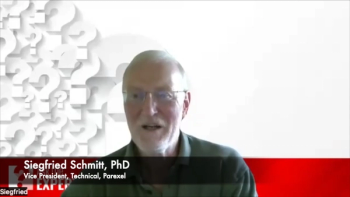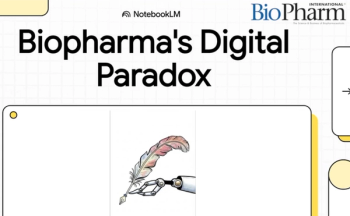
- BioPharm International-12-01-2006
- Volume 19
- Issue 12
From the Editor: The Stem Cell Vote
In various races in the November elections, voters supported stem cell research. Now, will they prepared to fund it?
In the November US elections, voters across the country supported stem cell research. Six Senate and three gubernatorial candidates who campaigned in favor of stem cell research won, and in two states, stem cell research was a central issue. One was the governor's race in Wisconsin, won by stem cell supporter Jim Doyle. The other was Missouri, where Democrat challenger Clare McCaskill, who made her support of stem cell research a campaign issue, defeated incumbent Jim Talent for the Senate. Missouri voters also narrowly approved an amendment to the state constitution that would prevent state and local governments from banning any federally permitted stem cell research, including embryonic stem cell research.
Laura Bush
These votes are encouraging for the biotech community. So far, however, the debate about stem cell research has focused on which sources of stems cells are acceptable for use in research—adult stem cells only, or embryonic stem cells, too, which can be grouped into four categories, by their source: unused in vitro fertilized embryos; aborted or miscarried embryos; cloned embryos; or existing stem cells lines created before August 2001 (i.e., those authorized by President Bush).
At some point, however, the debate will shift to money. If Americans are indeed ready to allow stem cell research, the question is, are they ready to fund it?
Eight states have authorized funding for stem cell research: California, Connecticut, Illinois, Indiana, Maryland, Massachusetts, New Jersey, and Virginia. Actual allocation has begun in just two, Illinois and New Jersey. Although California's allocation is the biggest, by far, at $3 billion, that money is tied up in litigation. The state currently plans to award $100,000 in grants over the next four years.
Connecticut has appropriated $20 million to support embryonic and human adult stem cell research through June 30, 2007, with another $10 million per year to be granted from 2008 through 2015. In total, at least $100 million in public support will be available over the next ten years. None of this has been disbursed yet; at the end of November, the committee was evaluating proposals.
Illinois's governor authorized $10 million in 2005, all of which was awarded. In August 2006, another $5 million was appropriated and then awarded in seven grants.
New Jersey, the first state to authorize research on human embryonic stem cells (including those not authorized by federal legislation), has authorized $23 million, of which it has awarded $5 million so far. Maryland has authorized $15 million; the submission period for proposals closes in January 2007.
But how far will this funding take us? The Tufts Center for Drug Development just estimated the out-of-pocket costs to develop a new biopharmaceutical at $559 million. If that figure is correct, the entire Connecticut funding is enough for less than one-fifth of a drug, or a little more than half of the $198 million Tufts calculates is needed for preclinical study.
And then, are Americans prepared to wait for results? The Tufts study shows that an average biopharmaceutical requires more than eight years to complete clinical trials and regulatory review; that does not include the discovery or preclinical periods.
Given this situation, it will be important for the stem cell research community to manage expectations. The initial message has to be, "stem cells hold promise." Once the public is convinced of that, however, and ready to fund, the next message has to be, "medical research takes time." I just hope that people who support stem cell research because of its promise to cure Alzheimer's or Parkinson's are voting not just to save their own grandmothers or uncles, for whom the cure isn't likely to arrive in time, but for those who have not yet acquired those diseases—in other words, for the greater good.
Laura Bush is the editor in Chief of BioPharm International,
Articles in this issue
almost 19 years ago
Regulatory Beat: Campaign Heats Up for Follow-On Biologicsalmost 19 years ago
Outsourcing: Offshoring to China: What Should Your Model Be?almost 19 years ago
Street Talk: Stem Cells: Tough Sell on Wall Street?almost 19 years ago
Final Word: New Organization Forms to Help FDA Fulfill its MissionNewsletter
Stay at the forefront of biopharmaceutical innovation—subscribe to BioPharm International for expert insights on drug development, manufacturing, compliance, and more.





